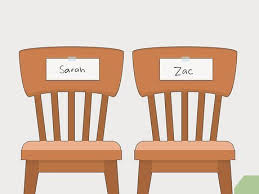Here are just 1 of the incredibly powerful techniques you’ll learn on an NLP Practitioner Course – a fabulous technique to improve your relationships with NLP. You will, at the very least, get insight into the relationship and understand the dynamics of what is going on, and you’re likely to be able to improve it, deepen it, and/or resolve feelings of conflict or disagreement.
Perceptual Positions
The Perceptual Positions technique is a fabulous way to step into someone else’s shoes and appreciate their perspective on a situation. It can be used for a variety of different situations; it could be a relationship between two people where there is a problem, perhaps an ongoing argument, or difference of opinions. Or it could be a relationship that is going really well, and you’d like to deepen it further, understand the other person more, and delve into the dynamics of the relationship.
And it could be any type of relationship:
- a romantic relationship,
- parent/child relationship,
- co-parenting relationship (whether together or separate)
- with a boss or superior
- with team mates
- a friendship
- or any other relationship between two beings
I’ve even seen it used to help a phobia of spiders, as an exploration between the person afraid and the spider’s point of view – apparently spiders are a lot less scary once you’ve considered their perspective!
I’ll use this spider example as fun way to bring the process to life.
The process is traditionally done by arranging two chairs, or positions, in a way that represents the relationship – this could be facing each other, sat next to each other, or on different sides of the room, whatever feels right to the person being coached. As I do a lot of my coaching while out walking, I’ve also regularly done this process walking along. As always with NLP coaching, flexibility to meet the needs of the client in front of you is key!
to edit.
Its also worth noting at this point, that you cannot change how anyone else behaves, you can only change yourself, the way you behave, your thought process and reactions. This may have some knock-on impact in the way the other person behaves, but you cannot directly change it! The coaching is for you – not the other person.
It could help:
- Change the way you think and act, or react, around that person – this may indirectly improve the interactions
- Provide food for thought to hold a conversation with the other person and discuss the situation
- Change your mind once you’ve truly considered the other view
- Give clarity on the next steps to resolve the situation.
- Deepen the connection and feeling of shared understanding with the other person
Once the outcome and ecology conversation has taken place, you’re ready to move into the process itself.
Firstly, you take account of your own point of view on the situation. Take a seat in the relevant chair. This is called the First Position. Questions to guide this again vary between Practitioner and also to suit each individual client, but start by orientating yourself into the situation and imagine you are there with the other person. To make this real for your senses, you might consider, when you’re there with the other person in this situation, what do you see? What do you hear? What do you feel?
So, for the spider example, this might involve you standing on a chair, cowering, looking down at the floor, and seeing the spider on the floor (quite possibly also cowering), hearing yourself shrieking and feeling an irrational sense of terror.
For the spider example, this might be something like, you want to not get eaten alive by spiders, or you’d like to feel more comfortable around spiders and find a way to live harmoniously with them. This might be important because you want to feel calm and safe in your own home.
A nice way to finish this section of the process is to consider a gift you’d like to give the other person. This could be a physical gift, a piece of advice, or something you’d like them to know.
In the spider example, you might let them know its nothing personal, you’re just scared of spiders and you don’t know why. Or you could give them a little woolly hat to make them look more friendly. You’ll find your unconscious mind comes up with some random, but often meaningful gifts at this point!
If you’re using chairs, its helpful to physically move into the other chair, to give yourself some spatial separation. Its important to note at this point, that you’re trying to embody the other person as accurately as possible. It can be helpful to take on some of their mannerisms, or gestures, or way of holding themselves to help you get into their mindset.
You’re not trying to do a caricature of them, or mocking impression – you’re simply trying to step into their shoes and get a true ‘sense’ of them. To fully associate, the client should use ‘I’ statements as if they were the other person, eg. I see this, I hear that….. rather than ‘He sees this, she hears that.
Of course, you can’t possibly know for sure what they are thinking in the situation, but you can make a good guess. It might be that they’ve told you, or you’ve heard from other people what they think, or it might be that you can just make a good guess as to what you would think if you were in their situation.
You’re then essentially going to go through the same set of questions, but considering them from the other person’s point of view. So, as the spider, what do you see, hear and feel? Well, you’re seeing a terrified looking person, towering above you on a chair, with a shoe in their hand, shrieking their head off at a deafening volume.
You’re probably feeling pretty scared yourself, so you’ve either frozen in place, or trying to make a run for it to the nearest place of safety.
What do you, as the spider, want from this interaction and why is it important? Well, you’d quite like for people not to be scared of you, and you’d quite like to go about your daily business catching flies without being screamed at. Why is this important? Well, perhaps you’d like to feel safe in your own home.
Finally in this section of the process, as the spider, you give a gift to the other person. This could be something you want them to know, like you don’t bite, or eat people in their sleep, and that you are really good at keeping the house free of flies. Or that you find it really frightening when they scream, and stomp about on a chair and that you don’t mind being gently put outside under a glass, instead of being bashed to death with a shoe.
Part Two completed, its time for another break state, as you step out of being the other person, and shake it off.
The next stage of the process is to consider the Third Position. I normally find it help to have this position at some distance to the interaction – they might be a passerby glancing in through the window, or someone sat at another table in the café – they are not at all involved in the interaction or situation, and don’t know the parties involved. It helps the client step outside of any strong emotions and to give insight into the dynamics at play from a neutral standpoint.
So, the client steps into this Third Position, into the passerby’s shoes and answers just a few similar questions. Firstly, what do they see, and hear? You don’t ask the passerby about their feelings, as they don’t really have any feelings worth taking into account, as they are neutral. You can also ask the passerby what it looks like might be going on, and if they could give any advice to the person in first position, what would it be?
This is essentially the client, in the shoes of the passerby, giving themselves some advice. (Remember, the passerby doesn’t give advice to the person in second position, as they are not the person getting the coaching, only the person in first position can make any changes.)
For the spider example, this could be a squirrel in the garden, looking in to see a terrified person on a chair and an equally terrified spider on the floor, and could give the advice to the person on the chair that, as they are much bigger and more frightening, perhaps they could be the one to help the spider feel less scared.
As with all coaching processes, its useful to step outside of the process, into a coach/client conversation and allow the client time to reflect on and process what they’ve learnt, and discuss any changes or actions they are going to take.
As a summary of the steps:
- Outcome and ecology check
- First Position – client as themselves, with regards to the situation.
- What do you see?
- What do you hear?
- What do you feel?
- What is going on?
- What outcome would you like?
- What’s important to you about the relationship, or resolving the situation?
- If there was a gift you’d like to give, what would it be?
- Break state
- Second Position – client fully associates into the other person’s shoes.
- Answer the questions as above, using ‘I’ statements as if you were speaking as the other person
- Break State
- Third Position – client fully associates into a passerby’s shoes
- What do you see?
- What do you hear?
- What do you think might be going on?
- If you could give any advice to the first person, what would it be?
- Return to First Position – the client as themselves, with all the insight from the other positions – repeat the same questions as above and add something like:
- What do you notice has changed?
- What new insight do you have?
- Break state, step out of the process and allow the client the opportunity to reflect and discuss their learnings and any actions to take.
So there you have it, an incredibly powerful process to improve your relationships using NLP!
If you’re interested in learning more, check out our NLP Practitioner course.








 RSS Feed
RSS Feed